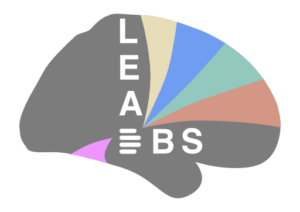Forum Replies Created
-
AuthorPosts
-
andreashorn
KeymasterHi Vinny,
yes, the update brought some changes to ANTs that take up too much memory. We already identified this as a problem and have incorporated some presets where users can choose a preset that also works well on laptops.
You can install the development version by following the steps highlighted in “Install via Github” in the manual (see Help/Support>Manual above). Or simply wait a bit until we release a new version soon.Sorry for the inconvenience.
Best, Andy
andreashorn
Keymaster…one thing that could have been is a segfault error in ANTs, especially likely when running on Windows. This could explain the first error from your first message. Unfortunately, Matlab doesn’t detect the system event segfault and continues as if the called routine had been successful. Ningfei recently fixed the ANTs binaries for Windows, so it could make sense to call “Apply Hotfix” from the Install menu to get up to nightly build state.
andreashorn
KeymasterHi Nik,
you should go step by step – if the registration is not good, Lead-DBS will not find the electrode.
We need a bit more info to really help you. You could also check out our Slack channel where you could easily send us some screenshots (See Help/Support above).
It’s not so easy anymore to do normalizations manually, but you could easily perform coregistrations (e.g. post-
to pre or between multiple pre images) manually somewhere else.In case of post-op CT, you’d need to call the registered CT “rpostop_ct.nii”, in case of postop MRI just call it postop_tra.nii. If you have multiple postop MRIs, you could call them postop_tra.nii and postop_cor.nii, postop_sag.nii.
If all your acquisitions are manually co-registered, just choose “already coregistered” during normalization.
Re normalization, I’d recommend to start with ANTs which seems most robust.
Hope this helps, Andy
andreashorn
KeymasterSo just in case someone else reads this, the issue could be resolved and was due to a misregistration when applying the coarse+fine mask in the brainshift removal tool on tsieger’s patient.
andreashorn
KeymasterOkay, great!
Could you try and remove or rename the “atlases” folder inside your patient’s directory (the one you selected in lead-dbs) and try to visualize again?Thanks!
andreashorn
KeymasterHi Katherine,
a few thoughts:
1. did you normalize the subject before? It won’t work otherwise. Which normalization method did you use? ANTs?
2. does visualization of the atlas in MNI space with the electrodes work okay?
3. Is it an “official” atlas or a custom one you made? If the latter, please try visualizing a different atlas first.
4. Which OS do you work on (Win/Linux/Mac) and what Matlab version do you use?Thanks!
Andy
andreashorn
KeymasterYes, it’s tonemapped and just for visualization at some parts in lead-dbs. It should usually show both bone and soft tissue in the same contrast.
https://en.wikipedia.org/wiki/Tone_mappingBest, Andy
andreashorn
KeymasterDear Tomas,
this indeed looks a bit worrisome and I’d love to inspect that subject myself. Could you please send it to me in anonymized form? Best would be the complete processed folder with all the files, if possible.
We have had trouble with brainshift correction in the past and fixed it recently. But I assume you use the newest version and since you even have applied the hotfix, this shouldn’t be the cause.
Thanks so much, best, Andy
andreashorn
KeymasterGlad that it works! Re warnings, these can usually be safely ignored. We are a bit lazy in getting rid of warnings – so they are usually totally fine/planned in Lead-DBS.
Have fun!andreashorn
KeymasterHi Tomas,
it is definitely possible to use only one.
If so, call the preop anat_*.nii (e.g. anat_t1.nii or anat_t2.nii or anat_pd.nii) and the postoperative one postop_tra.nii (no matter if it’s transversal, coronar or whatelse. The postop_tra.nii is the only needed file and if there is only one, one should call it that way.
It could well be that the status bar is outdated – so never mind what it says. I never pay attention to it much so it could be that the code that controls it is not correct anymore.Best, Andy
andreashorn
KeymasterHi Tomas,
– the mni is in mni space and brainshift corrected (if you did perform brainshift correction).
– native is in space of the postop image (e.g. postop_tra.nii or rpostop_ct.nii)
– scrf is in space of the anatomical images (e.g. anat_t1.nii) and is similar to native but brainshift corrected – i.e. if you compare the two, you should see the amount of brainshift
– the acpc fields are coordinates relative to the AC/PC system (auto-converted/marked as defined in Horn 2017 neuroimage).Also thanks for your nice comments in the other post from my side :)
Best, Andy
andreashorn
KeymasterAs said via email, no (see mail).
Please use a fibertracking software for that (TrackVis/DSI Studio)andreashorn
Keymaster… so new structure should be
/dMRI/NameOfGroupConnectome/data.mat…as a side note, I had written this change to you guys when I implemented it since I knew it would lead to trouble :)
Not sure whether via mail or slack but I did think of you when changing the structure.The change was/will be needed because we now have a definite format for structural and functional connectome files. In fMRI, connectomes are not stored as single files but folders with a multitude of subject files. I also wanted to allow different ways to store structural connectomes that need multiple files. So I decided to replace the .mat files with folders inside of which is (for now) a single file named data.mat
Best, Andy
andreashorn
KeymasterHi Ada,
in addition to Ningfeis comments, there’s also the [Tools] > [Apply Patient (Inverse) Normalization to File…] options to apply the warpfield to any custom nifti file.
Best, Andy
andreashorn
KeymasterHi Astrid,
true, please replace with this file:
https://github.com/leaddbs/leaddbs/blob/master/ea_mapelmodel2reco.mBest, Andy
-
AuthorPosts

